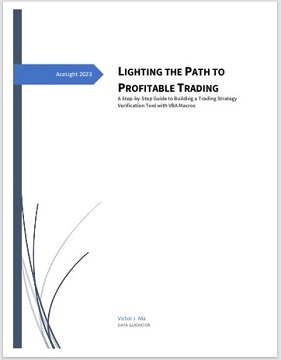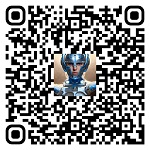What does it mean to backtest a trading strategy in stock market?
|
|
Picture this: you're a trader, sitting in front of your computer, staring at
your trading strategy with a mix of hope and fear. You've put your heart,
soul, and a healthy dose of caffeine into developing the perfect trading
strategy. But how do you know if it will actually work? How can you avoid
those "oh no" moments when the market goes against you?
Enter
backtesting, scenario analysis, and forward performance testing. These are
the tools that can help you put your trading strategy to the test, without
risking real money. It's like trying out different pick-up lines on a dating
app, without actually having to face rejection (or worse, a date with
someone who has zero sense of humor).
But, just like in the dating
world, these testing techniques can come with their own set of risks and
limitations. You don't want to be that person who tries too hard with the
cheesy one-liners, or that trader who relies too heavily on backtesting and
ignores the real-world market conditions.
So, let's take a closer look at
backtesting, scenario analysis, and forward performance testing, and figure
out which one is the best wingman for your trading strategy.
Backtesting involves running a trading strategy against historical data to
see how it would have performed, taking into account factors such as entry
and exit points, risk management, and position sizing. The process typically
involves using software that can simulate trades and calculate metrics such
as profit and loss, win rate, and drawdown.
The goal of backtesting
is to assess how a trading strategy would have performed in the past, had it
been applied consistently over a given period of time. This allows traders
to identify strengths and weaknesses in the strategy, as well as potential
areas for improvement. It can also help traders set realistic expectations
for the strategy going forward.
To conduct a backtest, traders
typically use historical market data to simulate trades based on their
chosen strategy. This can be done manually using a spreadsheet, but most
traders use specialized software that can automate the process and provide
detailed performance metrics.
When conducting a backtest, it's
important to use a large sample of historical data that is representative of
the markets and time period you intend to trade in. This can help ensure
that the results of the backtest are reliable and statistically significant.
Some of the key metrics that traders look at when backtesting a strategy
include:
• Profit and loss: This measures the total amount of profit or
loss generated by the strategy over the backtested period.
• Win rate:
This measures the percentage of trades that were profitable.
• Average
gain and average loss: This measures the average size of winning and losing
trades, respectively.
• Drawdown: This measures the maximum percentage
loss that the strategy experienced during the backtested period.
By
analyzing these metrics, traders can get a better sense of the risk and
reward potential of their strategy, and adjust their approach as needed to
optimize performance.
It's worth noting that backtesting is just one
part of the process of developing and testing a trading strategy. Traders
should also consider factors such as their own risk tolerance, market
conditions, and current news and events that could impact the markets. By
combining backtesting with other forms of analysis and research, traders can
increase their chances of success in the markets.
 Benefits
of Backtesting: Benefits
of Backtesting:
1. Improved Confidence: Backtesting can give traders
greater confidence in their trading strategies. By analyzing historical
performance data, traders can see how their strategy would have performed in
the past and adjust their approach accordingly.
2. Better Risk
Management: Backtesting can help traders identify potential risks associated
with their trading strategy. By examining past drawdowns and losses, traders
can refine their risk management approach and minimize potential losses in
the future.
3. Time-Saving: Backtesting is a time-saving process that can
quickly identify the strengths and weaknesses of a trading strategy. By
conducting backtests, traders can get a sense of the viability of their
strategy without having to invest real money and time in the markets.
4.
Optimization: Backtesting can help traders optimize their trading strategies
by identifying the most effective parameters for their approach. By tweaking
variables such as position size, stop-loss levels, and entry/exit points,
traders can improve their performance and profitability.
For more details, click
LIGHTING THE PATH TO PROFITABLE TRADING: A Step-by-Step Guide to Building a Trading Strategy Verification Tool with VBA Macros to get the whole tutorial handbook for free!
And click Free Trial to download strategies testing tools, all for a 30-day Free Trial.
Click on Subscription to order more strategies testing tools to help your stock trading.
Risks of Backtesting:
1. Overfitting: Overfitting occurs when a
trading strategy is too finely tuned to past data, which can lead to poor
performance when applied to future market conditions. This is why it's
important to use a large sample of historical data when conducting a
backtest.
2. Survivorship Bias: Survivorship bias occurs when only
successful trades are included in a backtest, while unsuccessful trades are
excluded. This can skew the results of the backtest and lead to unrealistic
expectations for future performance.
3. Lack of Real-World Factors:
Backtesting does not take into account real-world factors such as slippage,
liquidity, and news events that can impact the markets. This can make the
results of a backtest less reliable in real-world trading conditions.
4.
Changing Market Conditions: Backtesting is based on historical data, which
means it may not be predictive of future market conditions. As markets
evolve, the performance of a trading strategy may also change, making it
important to continually review and refine trading strategies.
Backtesting, scenario analysis, and forward performance testing are all
useful tools for traders looking to develop and optimize their trading
strategies. Each approach has its own strengths and limitations, and traders
should use a combination of these approaches to make informed trading
decisions.
Backtesting: Backtesting is a process of evaluating a
trading strategy by analyzing historical data to see how it would have
performed in the past. It involves running a trading strategy against
historical data to simulate trades and calculate metrics such as profit and
loss, win rate, and drawdown. The goal of backtesting is to assess the
viability of a trading strategy based on past performance.
Scenario
Analysis: Scenario analysis involves simulating different market scenarios
to see how a trading strategy would perform under different conditions. This
can involve adjusting variables such as position size, stop-loss levels, and
entry/exit points to see how the strategy would perform in different market
conditions. Scenario analysis can be used to identify potential risks and
weaknesses in a trading strategy, as well as to optimize its performance
under different market scenarios.
Forward Performance Testing:
Forward performance testing involves applying a trading strategy to
real-world market conditions to see how it performs in real time. This
involves using the strategy in a live trading environment and tracking its
performance over a given period of time. The goal of forward performance
testing is to assess the effectiveness of a trading strategy in real-world
market conditions and to make any necessary adjustments to optimize its
performance.
The main differences between these three approaches are
the time period being analyzed and the goal of the analysis. Backtesting and
scenario analysis are focused on analyzing historical data to assess the
viability of a trading strategy, while forward performance testing involves
applying the strategy in real-world market conditions to assess its
effectiveness in real time. Backtesting and scenario analysis are useful for
identifying potential strengths and weaknesses in a trading strategy before
committing real money to it, while forward performance testing is focused on
optimizing a strategy's performance in real-world market conditions.
So, there you have it - the ultimate guide to backtesting, scenario
analysis, and forward performance testing. With these tools in your trading
arsenal, you'll be ready to take on the market like a pro. But remember,
just like in dating, there's no such thing as a guarantee. You can't control
everything, no matter how hard you try. Sometimes, the market will surprise
you, just like a date who shows up wearing a clown suit.
But, with
the right mindset, a bit of flexibility, and a sense of humor, you can
weather any storm. Who knows, you might even learn to enjoy those unexpected
market moves, just like a good date who surprises you with a hidden talent
or an offbeat sense of humor.
So, go forth and test your trading
strategy, with a healthy dose of caution and a dash of humor. Who knows, you
might just find that winning flavor of ice cream, or that special someone
who makes your heart skip a beat (and your wallet grow). Happy trading, and
happy dating!
|


|

Free Tutorial
Share
|
|
|
|